Designing a kitchen involves balancing aesthetics, functionality, and budget. For many homeowners, another critical factor is accessibility – creating a space that is safe, comfortable, and usable for everyone, regardless of age or physical ability. Often, discussions around accessible kitchens reference ADA compliance. While the Americans with Disabilities Act (ADA) primarily sets legally enforceable standards for public and commercial spaces in the US, its guidelines provide an excellent framework for designing highly functional and inclusive residential kitchens. Whether aiming for strict adherence for specific needs or incorporating principles for aging in place or universal usability, understanding ADA-inspired design is key.
This article explores the core principles and features of an ADA-compliant (or ADA-inspired) accessible kitchen design, focusing on creating modern spaces that work beautifully for people of all abilities.
Why Accessible Kitchen Design Matters
Incorporating accessibility principles into your kitchen design offers significant benefits:
- Independence: Allows individuals with mobility challenges or other disabilities to use the kitchen more easily and independently.
- Safety: Reduces risks of accidents by ensuring adequate maneuvering space, proper reach ranges, and safer appliance controls.
- Usability for All: Creates a space that is more comfortable and convenient for everyone, including children, seniors, and people of varying heights.
- Aging in Place: Allows homeowners to comfortably stay in their homes longer as their mobility needs change over time.
- Potential Resale Value: Accessible features can be an attractive selling point for a wider range of potential buyers.
Key Principles of ADA-Compliant / Accessible Kitchen Design
These guidelines, largely based on or inspired by ADA standards adapted for residential settings, focus on space, reach, and ease of use:
1. Clear Floor Space & Maneuvering Clearances
Adequate space is crucial for navigation, especially for wheelchair users.
- Turning Space: Provide a minimum clear floor space of 60 inches (1525 mm) in diameter for a wheelchair to make a 180-degree turn, or a T-shaped turn space.
- Accessible Routes: Ensure clear passage widths of at least 36 inches (915 mm) along walkways within the kitchen.
- Work Zones: Allow sufficient clear floor space (typically 30×48 inches or 760×1220 mm) in front of sinks, cooktops, ovens, refrigerators, and dishwashers for forward approach.
2. Countertop Heights & Knee Space
Varying heights and clear space underneath accommodate different users.
- Variable Heights: While standard counter height is 36 inches, include a section of countertop at a lowered height, typically between 28-34 inches (710-865 mm) above the floor, for seated work.
- Knee/Toe Clearance: Provide clear knee and toe space under the accessible work surface and sink. This generally requires at least 27 inches (685 mm) high clearance for knees, 30 inches (760 mm) wide, and 17-19 inches (430-485 mm) deep.
3. Reach Ranges
Controls, storage, and work surfaces must be within easy reach.
- Forward Reach: For accessible countertops or controls reached over an obstruction, the maximum high forward reach is typically 48 inches (1220 mm) and the minimum low forward reach is 15 inches (380 mm) from the floor.
- Side Reach: Maximum high side reach is typically 48 inches (1220 mm), low side reach minimum is 15 inches (380 mm).
- Placement: Position frequently used items, storage (see cabinetry), outlets, and light switches within these accessible ranges.
4. Accessible Sink Design
- Height & Clearance: Install the sink within or alongside the lowered counter section with adequate knee clearance underneath.
- Depth: Choose a shallower sink basin (typically 6.5 inches deep or less) to allow easier reach for seated users.
- Pipe Protection: Insulate hot water pipes and drains beneath the sink to prevent burns. Ensure garbage disposal units don’t obstruct knee space.
- Faucets: Use lever handles, touchless controls, or loop handles that don’t require tight grasping or twisting. Pull-down or pull-out sprayers enhance usability.
5. Accessible Cabinetry & Storage
Accessing storage is a common challenge.
- Base Cabinets: Prioritize drawers, pull-out shelves, and Lazy Susans over deep fixed shelves, which are hard to reach into. Ensure adequate knee space under specific sections.
- Upper Cabinets: Install upper cabinets lower than standard height (top shelf within reach range) or utilize pull-down shelving mechanisms that bring contents down to counter level.
- Hardware: Choose hardware that is easy to grasp and operate, such as D-shaped pulls or loop handles, instead of small knobs.
6. Accessible Appliances
Select appliances with usability in mind.
- Cooktops: Choose models with controls at the front or side, not requiring reaching over hot burners. Ensure clear knee space below if intended for seated use. Induction cooktops offer a safer, cooler surface.
- Ovens: Wall ovens installed at a lower, accessible height are preferable to ovens below a cooktop. Side-hinged doors can offer easier access than traditional pull-down doors. Microwave drawers installed below the counter are also a great option.
- Refrigerators: Side-by-side models generally provide easier access to both fresh and frozen compartments for someone in a wheelchair compared to top-freezer or bottom-freezer models. French door models with a bottom freezer drawer can also work well.
- Dishwashers: Look for models with accessible front controls. Consider raising the dishwasher 6-12 inches off the floor for easier loading/unloading, or opt for dishwasher drawers.
7. Lighting & Controls
- Lighting: Provide ample, layered lighting (ambient, task, under-cabinet) to ensure good visibility throughout the kitchen, reducing shadows.
- Controls: Use rocker-style light switches instead of toggle switches. Place switches and electrical outlets within accessible reach ranges.
Universal Design Connection
Many ADA-inspired principles align with Universal Design – the concept of designing spaces and products to be usable by the widest range of people possible, regardless of age, size, or ability, without the need for adaptation or specialized design. An accessibly designed kitchen often benefits everyone in the household.
Planning Your Accessible Kitchen
- Seek Expertise: Consult with designers, architects, or builders experienced in accessible design, universal design, or aging-in-place modifications (like Certified Aging-in-Place Specialists – CAPS).
- Personalize: Assess the specific needs of the intended users – accessibility is not one-size-fits-all.
- Plan Early: Incorporate accessibility features from the beginning of the design process for seamless integration. Consider appliance placement and plumbing/electrical locations carefully.
Conclusion
Designing an ADA-compliant or ADA-inspired accessible kitchen goes beyond meeting minimum requirements; it’s about creating a truly functional, safe, comfortable, and inclusive space. By focusing on key elements like ample clear floor space, varied countertop heights with knee clearance, accessible reach ranges, and thoughtfully selected cabinetry and appliances, you can build a modern kitchen that caters to people of all ages and abilities. Embracing these principles not only enhances independence for those with specific needs but often results in a more user-friendly and future-proof design for everyone.


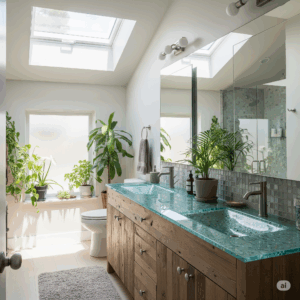
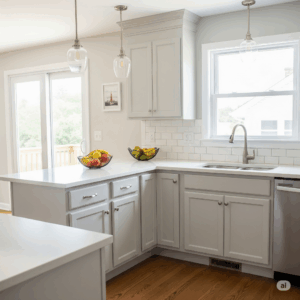
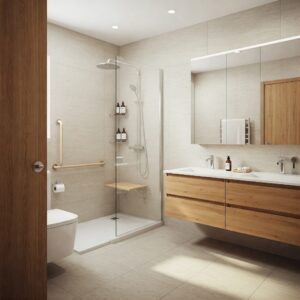
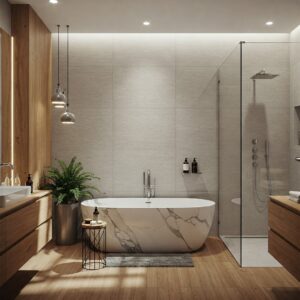
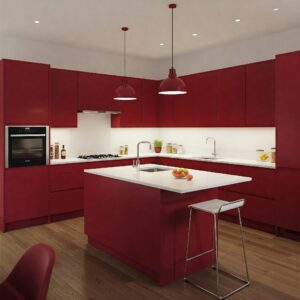
Leave a Comment